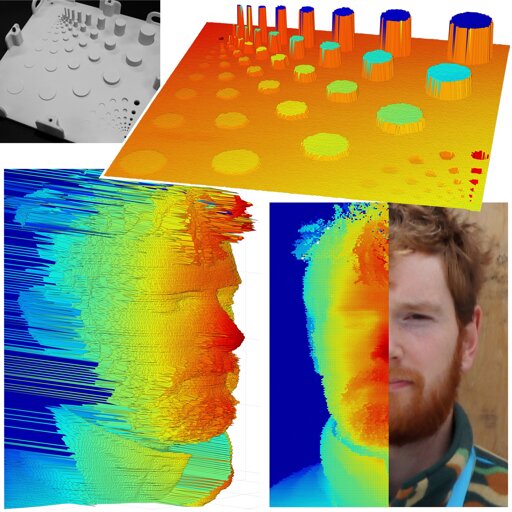Really cool, but really scary, all I see is facial biometrics from 1 km away.
And suddenly masking got a whole lot more popular.
Hello sir, I’m an not from the government and would like to show you something off in the distance for about 3 seconds if you will. Step forward where I’ve carefully marked the street with blue painter’s tape. Do not smile. Did you see it? No? Good!. Well what it is, its ah… Don’t worry about it. Good day sir. What are you talking about? I asked you to step where? I did no such thing. I’m just a normal person living in the city.
So, more ways to surveil us? Cool cool cool.
Modern tech makes it hard for me to take science fiction seriously anymore that involves humans piloting space fighters, manually aiming weapons, or even being effective on battlefields. We’re rapidly reaching a point where warfare will be strictly in the realm of machines.
Terminator becoming more and more reality every year.
So, keep in mind that single photon sensors have been around for awhile, in the form of avalanche photodiodes and photomultiplier tubes. And avalanche photodiodes are pretty commonly used in LiDAR systems already.
The ones talked about in the article I linked collect about 50 points per square meter at a horizontal resolution of about 23 cm. Obviously that’s way worse than what’s presented in the phys.org article, but that’s also measuring from 3km away while covering an area of 700 square km per hour (because these systems are used for wide area terrain scanning from airplanes). With the way LiDAR works the system in the phys.org article could be scanning with a very narrow beam to get way more datapoints per square meter.
Now, this doesn’t mean that the system is useless crap or whatever. It could be that the superconducting nanowire sensor they’re using lets them measure the arrival time much more precisely than normal LiDAR systems, which would give them much better depth resolution. Or it could be that the sensor has much less noise (false photon detections) than the commonly used avalanche diodes. I didn’t read the actual paper, and honestly I don’t know enough about LiDAR and photon detectors to really be able to compare those stats.
But I do know enough to say that the range and single-photon capability of this system aren’t really the special parts of it, if it’s special at all.
I thought that was Chris Pratt for a second. And wondering why we wanted a lidar enhanced photo of Chris Pratt’s face from a kilometer away.
that level of detail at 1km is insane. We are so fucked in the machine war.
Cool, but less cool when I remember what dark shit this kind of technology can be used for
*will be used for
Imagine what they could do with two photons.
Only.
…1kilometer only.
Or 1km so far.
Yeah this is crazy stuff.
superconducting nanowire single-photon detector
Don’t suppose they sell those on aliexpress yet?
I bet Styropyro has a box of them tucked away somewhere. His laser defense turrets will have unmatched accuracy.
Hey YouTube, today we’re testing this photon detector I found browsing ebay that was sold by some friendly russians. It’s been collecting dust for 10 years but due to some recent developments it’s as relevant as ever! Now I’ll be able to see the feds coming from miles away!
100 bucks says someone will try and use this on their genitals within the year.
Umm, y’all, this is serious.
These scientists got a chill with the AI and surveillance tech and work on making a refillable toothpaste tube ffs.
But Elon thinks camera vision is enough to drive a car.
Well, not to side with the fascist shithead, but you know, “broken clock…”. The thing is, camera vision is kinda enough… It’s an entirely different thing if it could be better, improved, safer, or whatever by adding LiDAR or other tech…
In fog, in a sand storm, in any heavy weather yer gonna want LiDAR.
Their camera gets confused by large objects in the dark that obstruct it’s view. It has crashed into a few overturned vehicles at night because it didn’t know what they were and just disengaged instead of detecting an impasse and stopping.
I feel that way, sometimes, too. ;-)
If humans can do it why not cameras?
Reason 1: humans can blink – a dirty camera can not.
Yeah, it makes it better and more reliable in harsh conditions, I agree, but driving has always been based on people looking where they go, so camera imagery is enough for driving. If it is not safe for a person, then it’s not safe for a car with only cameras. Plus only having cameras doesn’t mean you cannot use special equipment, IR cameras can improve visibility on harsh conditions too. Not that I mean they are used, but you know, it’s a matter of what we mean with “enough to drive”. Again, I want to emphasize that I agree, having LiDAR or other tech would be much much better.
Despite all of the evidence to the contrary, you chose to be confidently incorrect about this?








